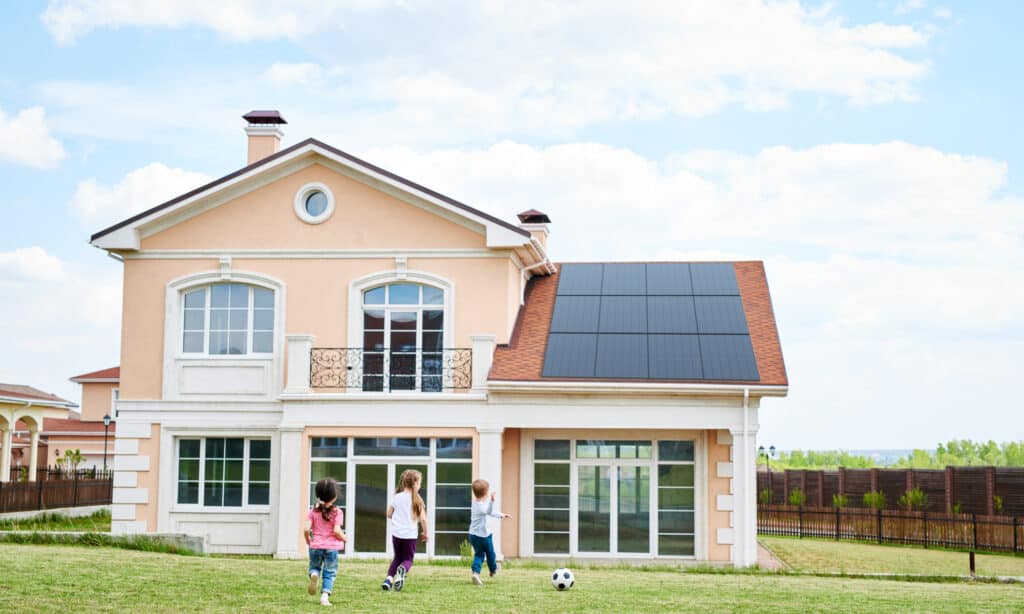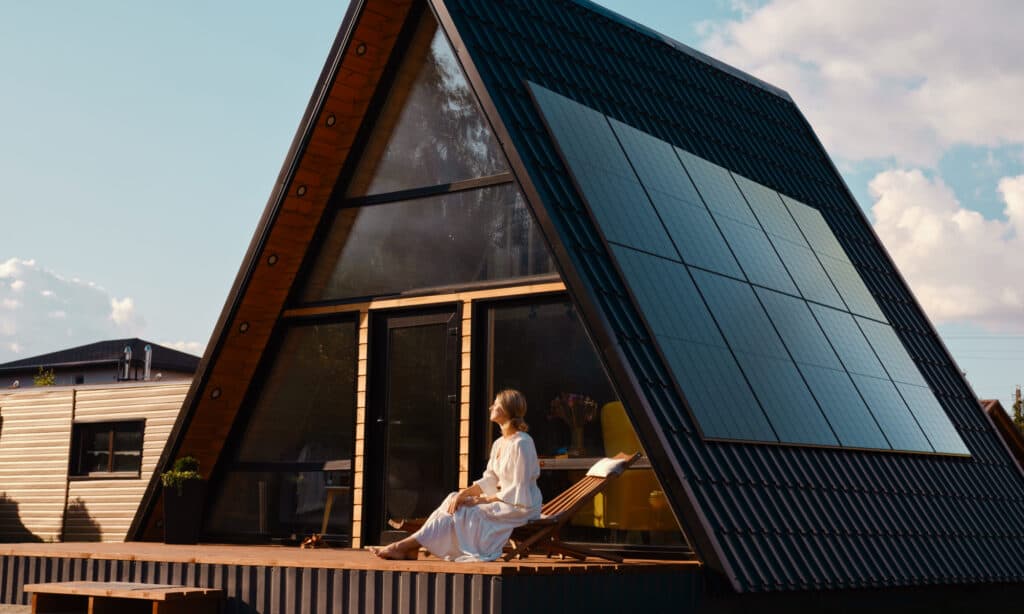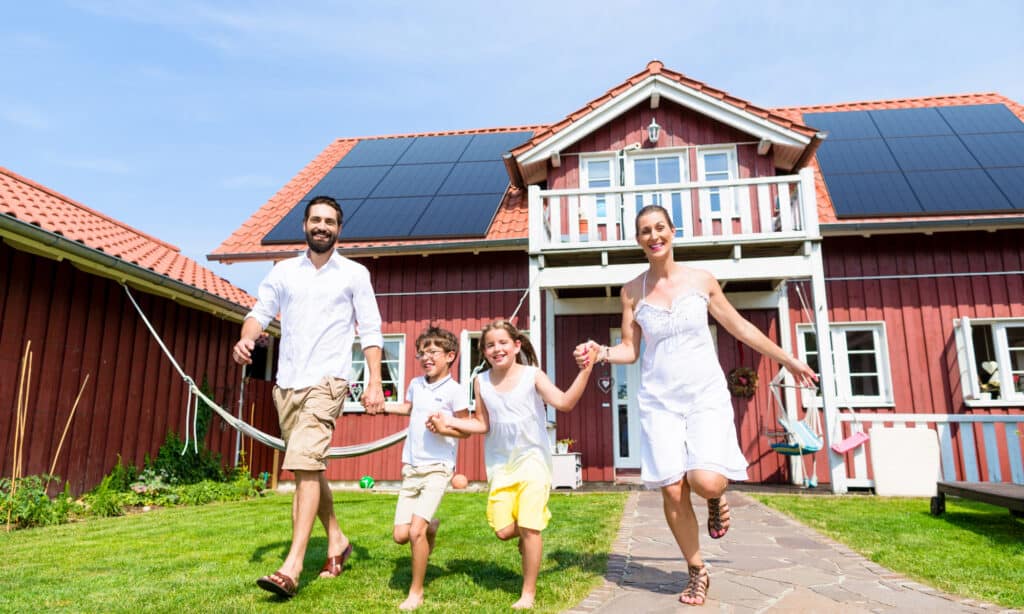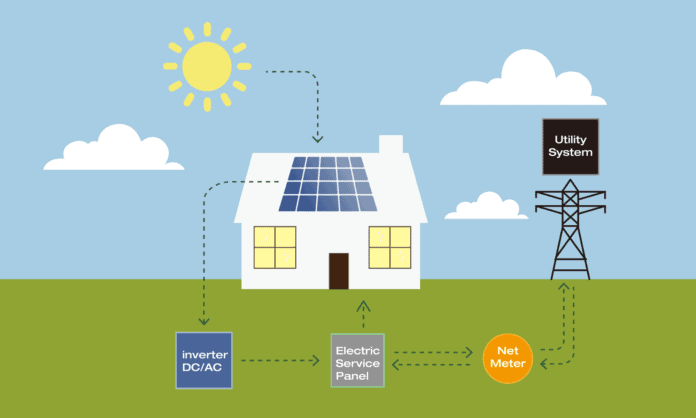Table of Contents
If you’ve ever considered switching all or part of your home electricity generation to clean, renewable solar power, you’ve likely heard of the Feed-in Tariff (FiT) or its successor, the Smart Export Guarantee.
Registration for the FiT scheme closed to new applicants in April 2019. The government designed the Smart Export Guarantee (SEG) scheme to take its place and launched the program in 2020.
There’s never a better time to start generating residential electricity using solar panels in the UK. The SEG plays a significant role in making on-grid and hybrid solar power systems a more viable investment over the long term.
So, what exactly is the Smart Export Guarantee?
And are you eligible to enroll in the SEG scheme?
Read on to find out.
What Is the Smart Export Guarantee (SEG)?
The Smart Export Guarantee (SEG) is a government scheme that enables small-scale generators of clean energy — like solar power — to receive payment for electricity exported to the National Grid.
The SEG scheme is jointly administered by:
- Ofgem
- Smart Export Generators (Homeowners and businesses that export clean electricity)
- Smart Export Licensees (Utilities and Power Companies)
The SEG replaced the Feed-in Tariff for new producers of eligible low-carbon electricity in 2020. Many people still refer to the process of exporting electricity back to the grid as “feeding-in).
Both individuals and companies can qualify for the SEG if they install a compliant solar power system with a total installed capacity (TIC) of 5 megawatts (MW) or less.
Total installed capacity means the maximum amount of electricity a solar panel array and balance of system can produce at once without damage or failure.
Even if you’re fortunate enough to live in a massive mansion, a residential solar power system is unlikely to generate (or require) more than 10kW of AC output at once.
The 5mW cap on SEG eligibility isn’t intended to discourage residential generators of clean energy.

Who Is the Smart Export Guarantee Aimed At?
If you’re a UK resident who consumes electricity, the Smart Export Guarantee is aimed at you.
In the face of global warming and climate change, governments around the world are seeking to incentivise individuals and small businesses to generate electricity with renewable resources like wind and power.
(Source: EPA)
Recent UK data for the percentage of greenhouse gas emissions caused by electricity generation is unavailable. But, the latest estimates by the US Environmental Protection Agency indicate that electricity production is second only to transportation in producing CO2, methane, and other harmful carbon emissions.
Households and small to medium-sized enterprises consume a significant portion of electricity.
Schemes like the SEG make it more financially viable for individual and small-scale electricity producers to invest in solar panels and the balance of the system required to contribute to the National Grid.
(Source: EIA)
Going back to the US again, small-scale solar — which includes residential solar installations — is growing at a breakneck pace.
Many attribute this growth to tax incentives and programs similar to the SEG. The equivalent of feeding-in power to the grid in the US is known as net metering.
Increased demand and innovation have also contributed to the falling cost of solar panels and systems, but the impact of schemes like SEG should not be underestimated.

How Does the Smart Export Guarantee Work?
In principle, the Smart Export Guarantee is quite simple.
The SEG scheme requires power companies and utilities to pay their customers fair value for electricity they produce using an eligible low-carbon energy generation system.
For most homeowners, a photovoltaic system that uses solar panels and a balance of system to generate electricity will make the most sense.
Read on to get the SEG nuts and bolts!
Which Renewable Energy Installations Are Eligible?
The complete list of clean, renewable sources of electricity eligible for the SEG includes:
- Solar photovoltaic panels and other PV modules
- Hydroelectric
- Micro-combined heat and power (with an electrical capacity of 50kW or less)
- Onshore wind
- Anaerobic digestion
As you can see, there are numerous options. But for most individuals and consumers, solar power makes the most sense.
Unlike the other low-carbon renewable energy sources listed above, solar panel arrays:
- Require relatively little surface area and no ground space for rooftop-mounted systems
- Location-independent
- Relatively inexpensive to purchase and install
If you’re a homeowner looking to switch to a renewable resource for electricity production, solar isn’t your only choice…
But it’s your best choice.
Types of Smart Export Guarantee Tariff
As a SEG generator, you have your pick of energy companies to sell your electricity to.
Each company will offer different rates and terms. It’s essential to choose your SEG licensee carefully.
According to Ofgem, SEG licensees for the fourth year of the scheme, which runs from 1 April 2023 to 31 March 2024, are as follows:
Mandatory SEG Licensees
British Gas
E (Gas & Electricity)
E.ON
EDF
Octopus Energy
OVO Energy
Scottish Power
Shell Energy
So Energy
The Utility Warehouse
Utilita
Voluntary SEG Licensees
Pozitive Energy
Rebel Energy
Given the enormous scale of power companies, there isn’t an overwhelming abundance of choice.
But the terms and rates each organisation offers vary significantly.
One essential deal point to understand is the difference between Fixed Rate and Flexible rate SEG.
Find out more below.
Fixed Rate SEG
As the name suggests, a fixed-rate SEG agreement will pay a set fee per kilowatt hour (kWh) exported for the duration of the contract.
Fixed-rate SEGs have both benefits and disadvantages.
On the one hand, fixing your export rate removes some uncertainty regarding how much income you can expect to generate under the SEG.
You’ll still be reliant on the amount of sunlight your system receives and its overall electricity production potential and efficiency. But you won’t be affected by the ups and downs of supply and demand and the going rate for electricity.
A fixed-rate SEG trades risk for a potentially lower return. As no one — including the power companies — can accurately forecast even short-term fluctuations in the price of electricity, SEG licensees hedge their bets by offering a “safe” fixed rate per kWh.
Market forces are inherently unpredictable. For example, who expected the 2022 Russian invasion of Ukraine?
With so much geopolitical and market uncertainty, it’s easy to understand the appeal of fixed-rate SEGs. But you may end up making less money than with a flexible rate SEG.
Flexible Rate SEG
If you’re looking for “passive” income from your low-carbon renewable energy system, a flexible rate SEG is probably not the right choice.
Flexible rate SEGs pay you per kWh based on the market rate for electricity. The amount of money you earn from the electricity you export to the National Grid may fall or rise precipitously depending on supply and demand.
Other factors that often impact the going price for electricity include:
- Geopolitics (for example, the war in Ukraine)
- Extreme weather events
- Infrastructure damage or upgrades
- Government regulation
- Fuel costs
Taking advantage of market fluctuations generally takes work. You’ll need to monitor the going rate for electricity and assess the most profitable time to export.
Given the risk vs reward inherent in playing the markets, the tradeoff may not be worth it. There are certainly easier ways to play the market than with the electricity you generate under the SEG.
However, the option is there if you wish to take it.
How Much You Can Get Paid Under the Smart Export Guarantee?
Besides the 5mW maximum output cap on low-carbon electricity generators, there is technically no limit to how much money you can make with the Smart Export Guarantee.
In reality, though, two primary factors determine how much you can get paid under the SEG with a residential solar power system.
- How many kWh of electricity you export
- The terms of your contract with the SEG licensee (power company)
You’ll always have the potential to earn more money with a flexible rate SEG. But there’s a significant tradeoff in security compared to a fixed-rate SEG.
In reality, very few residential SEG generators will actually make money by feeding in electricity. Most or all of the power you generate will be offset by the on-grid electricity your home consumes.
However, installing a hybrid solar power system can save significantly more money on utility electricity.
A hybrid system integrates solar battery storage with a grid-tied system, which can offer significantly more energy security and earning potential.
For example, an EcoFlow PowerOcean system with solar panels is SEG-eligible and comes equipped with a 5kWh LiFePO4 solar battery.
You can expand the storage to 45kWh — enough to power most homes completely off-grid for a month.
EcoFlow PowerOcean addresses the primary disadvantage of grid-tied solar power systems without storage.
On-grid systems without a solar battery do not work during a blackout.
Grid-tied solar power systems automatically shut down during an outage to prevent further infrastructure damage and eliminate the risk of harming workers attempting to restore electricity.
EcoFlow PowerOcean instantaneously switches to battery backup during a blackout to keep your home operating normally. As long as your consumption doesn’t exceed the amount of electricity your solar panels produce, you can carry on as usual during an outage indefinitely.
In addition to energy security, hybrid solar systems offer additional opportunities to save money on utility-provided electricity.
Power companies charge more for electricity used during peak hours. With an intelligent grid-tied system like EcoFlow PowerOcean, you can set up your system to only draw on grid power during off-peak hours — or at least until your stored power runs out.
The EcoFlow app allows you to monitor and control PowerOcean and other EcoFlow portable power stations from anywhere with an internet connection.
If one of your goals with switching to solar is to save or make money, the ability to schedule your consumption for off-peak hours — and to change settings from anywhere — can significantly increase your return on investment over the long term.
If you already have an on-grid system and want to add storage, EcoFlow PowerOcean DC Fit is a perfect match. You get all the control and savings, AND you don’t have to replace any of your existing equipment.
If you’re already set up with SEG certification and an export meter, etc., you don’t have to go through the hassle of reapplying. With EcoFlow PowerOcean DC Fit, your existing grid connection remains unchanged.
Unfortunately, this added convenience means your system will not work during a blackout. It will stay offline until power is restored.
Can You Combine SEG With Other Grants and Financial Support?
With a few exceptions, yes. You can combine the SEG with most of the other incentives that encourage people to switch to solar.
You can switch to the Smart Export Guarantee if you’re already enrolled in the Feed-in Tariff scheme.
However, you can’t enroll in both.
The SEG doesn’t reward you for the total amount of low-carbon energy your system produces, so switching to the SEG may not make financial sense.
Enrolling in the SEG scheme doesn’t prevent you from also claiming the Zero-VAT discount on solar panels, nor does it preclude you from participating in most other incentive programs.
The SEG is just one of a growing list of nationwide and local government incentives available to UK residents that embrace solar power or to subsidise the cost of improving energy efficiency.
Here’s a list of active government solar power grants and schemes available in 2024.
UK Government Solar Incentives (Open to Eligible Applicants in 2024)
| Solar Grants | Run Dates | Eligibility | Potential Savings (If Qualified) |
| Solar Together | N/A | Homeowners and renters residing in participating council areas | 10% – 25% |
| Energy Company Obligation (EC04) | April 2022 – March 2026 | Homes in England, Scotland, or Wales. | Homeowners/residents may be eligible for free solar panels |
| Home Upgrade Scheme (HUG2) | April 2023 to March 2025 | Low-income, off-grid, and low energy efficiency rated properties | Up to £10,000(dependent on your local council) |
| Home Energy Scotland Grant and Loan Schemes | N/A | Homes in Scotland | Up to £6,000 |
| Welsh Government Warm Homes Nest Scheme | N/A | Low-income/low energy performance rated Welsh homes | Homeowners/residents may be eligible for free solar panels |
| Solar Schemes | Run Dates | Eligibility | Potential Savings (If Qualified) |
| Smart Export Guarantee (SEG) | N/A | Households with Microgeneration Certification, export meter, and maximum capacity <5MW | 1p to +/- 25p per kWh, depending on your choice of SEG licensee and agreement terms |
| 0% VAT on Solar Panel Purchases and Installation | April 2022 – March 2027 | Purchase and installation of solar panels | 0% VAT charged on solar panel purchases. O-5% VAT on installation costs. |
By offsetting the upfront cost of switching to solar with government incentives, you can significantly shorten your solar payback period and start making money.
How Do You Apply for the Smart Export Guarantee?
As with any government scheme, a certain amount of red tape is involved in getting set up with the Smart Export Guarantee.
At the risk of being obvious, the first step — and the most essential — is purchasing a solar power system that meets the eligibility requirements of the SEG.
For residential solar installations, you can only participate in the SEG if you own the photovoltaic system and it outputs 5mW of electricity or less.
There are three additional prerequisites for applying to be an SEG generator (small-scale producer of low-carbon electricity).
MCS Certification
The installation must be “suitably certified” under the Microgeneration Certification Scheme (MCS). The easiest way to obtain MCS certification is to use a certified contractor to install your solar panels and balance of system.
Export/Smart Meter
An export meter — sometimes known as a bidirectional meter — measures how much electricity and how much electricity you consume and enables transmission to the grid.
The meter must provide half-hourly export ratings, which typically requires a smart meter. Depending on your power company, you may be able to get a smart meter installed at their expense.
Some utilities won’t provide an export meter to households that consume 50% or more of their electricity from the grid. However, you can pay to install a smart meter yourself.
A qualified electrician MUST carry out the installation of electrical meters of any kind — DO NOT attempt to DIY anything that involves high-voltage circuitry.
MPAN Registration
You must have an export meter point administration number (MPAN)
An MPAN number — also known as a supply number — is a unique 21-digit code used to identify electricity suppliers in the UK.
The National Grid can provide you with an MPAN number. However, you will need to sign up with a power company. The National Grid does not supply electricity directly to consumers.
Detailed instructions on becoming a licensed SEG generator can be found here.
Frequently Asked Questions
The Feed-in Tariff (FiT) scheme closed to new applicants in 2019. The Smart Export Guarantee took its place in 2020. The SEG requires power companies to pay customers for electricity they generate using low-carbon systems like small-scale wind turbines or rooftop solar panel systems and export back to the National Grid. Unlike the FiT, the SEG offers no compensation to customers for the total amount of power their system generates.

Final Thoughts
Generating your residential electricity using solar power has numerous benefits.
The Smart Export Guarantee (SEG) makes switching to solar an even better investment.
By selling a portion of the power you generate back to the grid, you can substantially reduce your electricity bills — or eliminate them altogether.
If you purchase a hybrid solar power system that offers electricity generation and storage with solar batteries — like EcoFlow PowerOcean — you get the added benefit of energy security.
Unlike traditional grid-tied solar systems, EcoFlow PowerOcean keeps your home running during blackouts and extended power outages.
Depending on how many modular 5kWh LiFePO4 batteries you purchase, you can operate your household appliances and systems for up to a month off-grid.
EcoFlow has a wide variety of solar panels, portable power stations, and solar generator solutions.
Check out our selection today.





